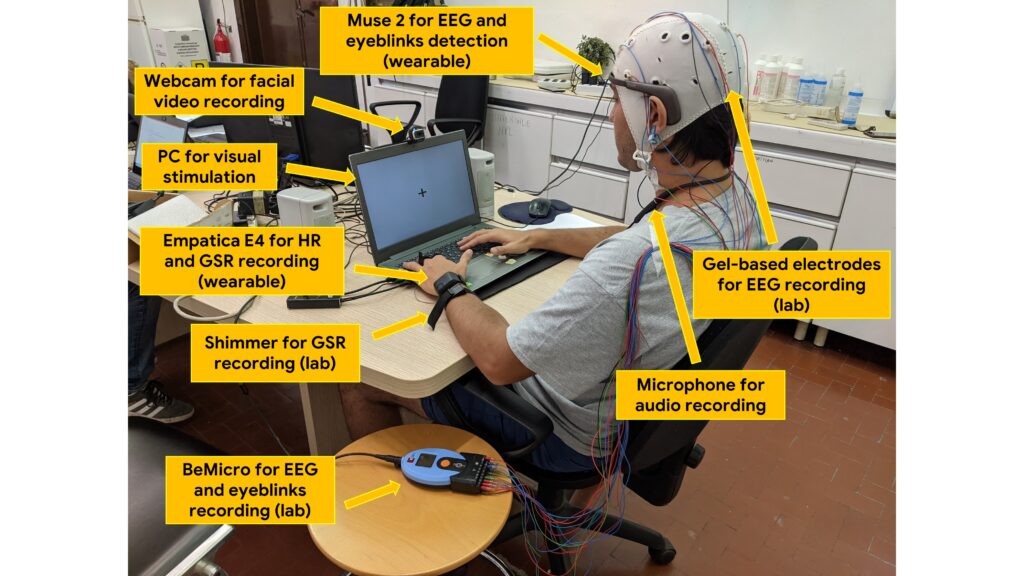Text by: Vicenzo Ronca, Researcher at Brain Signs
The In-Lab experimental phase of the WorkingAge project is completed. The tests aimed at identifying and validating the set of sensors and methodologies for developing the WorkingAge of Wellbeing (WAOW) tool. Such experiments were conducted in several European countries, corresponding to the partner’s premises, challenging the difficulty of running experimental protocols during the COVID-19 pandemic. All the experiments were run in compliance with all the social distancing practices and hygiene standards stated by the World Health Organization (WHO).
The WorkingAge In-Lab tests were based on a shared experimental protocol between partners of the consortium. This aspect allowed us to enlarge the experimental sample and reach a greater robustness of the experimental outcomes. In this regard, BrainSigns recruited 17 participants and tested different solutions for acquiring the Electroencephalogram (EEG), Electrodermal Activity (EDA) and Electrocardiogram (ECG) data with the aim to identify the best technical combination of sensors to be integrated in the WAOW tool.

The shared experimental protocol included three different tasks for the participants: such tasks were selected to modulate the mental workload, stress, and emotional state of the participants, and to simulate the daily working activities whose will be carried out by the workers during the next experimental phases (In-Company tests) in realistic working environments.
The next step will consist in the validation of the data analysis algorithms and integration of the DSS modules which will be used in the final version of the WAOW tool.
